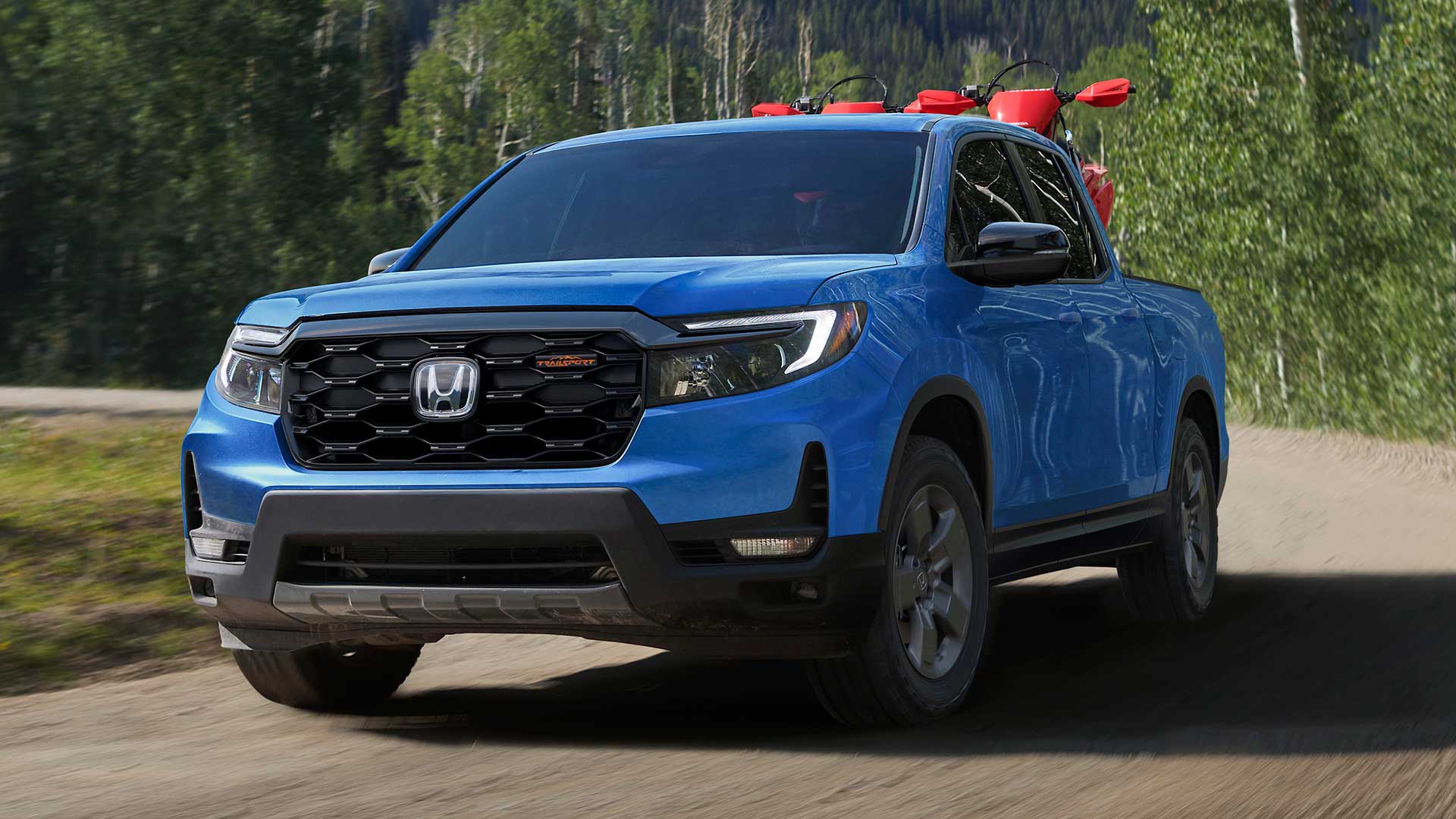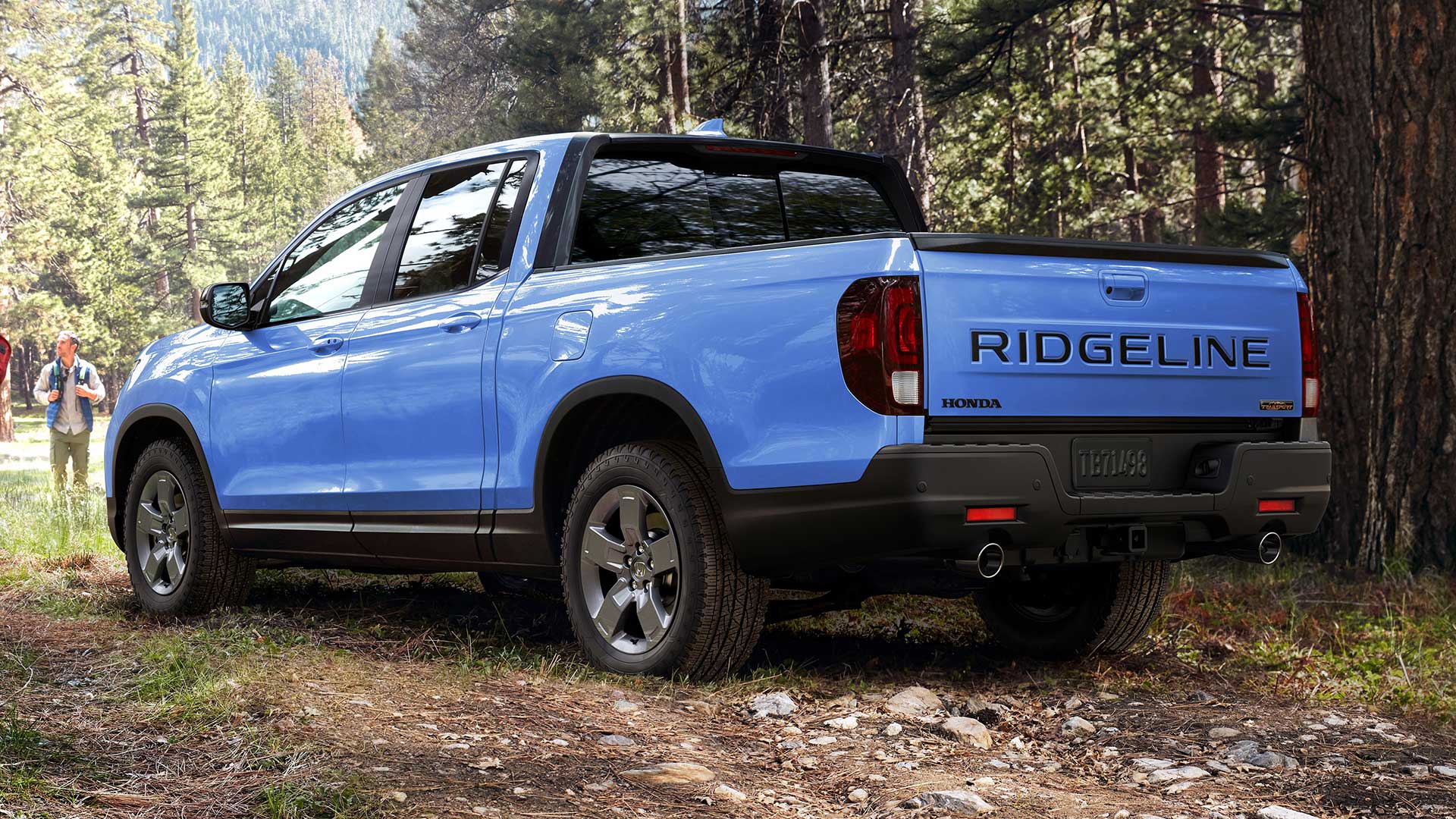2010 Lincoln MKT
The new management at Ford has pledged to rebuild Lincoln to its former glory as a top-flight luxury brand. Given how far down Lincoln’s status has fallen, that will be no small feat. But, Lincoln is making progress. On the heels of the well received MKS sedan comes this MKT, their first full size crossover utility. So, let’s see if the MKT is indeed another step in the right direction.
The three-row 2010 Lincoln MKT takes its showroom place one slot above the midsize, two-row MKX crossover. First seen as a concept at the 2008 North American International Auto Show, the MKT is a decidedly luxurious people-mover that still targets common family concerns. But, being an upscale CUV, it also boasts a lot of technology.
Sharing a platform with the capable Ford Flex, the MKT is the first ground-up vehicle using Lincoln’s latest design language. Still, at first glance, the MKT takes on a lumbering and overstated appearance, with its overdone reincarnation of the classic Lincoln Zephyr grille. Adaptive HID headlights are standard. The look is much improved in profile with far more flow and show than the boxy Flex. Well-sculpted body surfaces and large 19 or 20-inch wheels give the MKT a truly premium image. Likewise, the brawny rear end with roof spoiler, jewel-like taillights, and dual chrome exhausts.
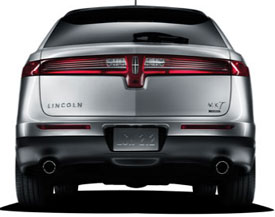 Securicode keyless entry opens a modern and inviting cabin that seats six or seven. Handsome wood trim and upscale amenities abound. Gauges and controls are smart, sophisticated, but more intuitive than import rivals. Deeply padded, leather-trimmed 12-way power front seating includes heating, cooling, and driver’s side memory. Optional is adaptive cruise with collision warning, and Active Park Assist. Rather than radar, it uses ultrasonic sensors to allow hands-free parallel parking. It’s the easiest to use self-park system yet.
Securicode keyless entry opens a modern and inviting cabin that seats six or seven. Handsome wood trim and upscale amenities abound. Gauges and controls are smart, sophisticated, but more intuitive than import rivals. Deeply padded, leather-trimmed 12-way power front seating includes heating, cooling, and driver’s side memory. Optional is adaptive cruise with collision warning, and Active Park Assist. Rather than radar, it uses ultrasonic sensors to allow hands-free parallel parking. It’s the easiest to use self-park system yet.
Atop the broad center stack is an eight-inch touch screen that displays audio and tri-zone climate controls, as well as standard back-up camera image. The optional nav system has real time traffic, weather, and local gasoline pricing. A 10-speaker hard drive audio system is standard, as is voice-prompted Ford SYNC with new 911 Assist.
Like Flex, the second row has limo-like legroom. Standard is a three-passenger split bench, with a pair of fold-and-tumble heated and cooled bucket seats optional. They allow for an available rear console-mounted refrigerator. The two-person, split-third row bench is tight for adults, but is ideal for children. Raise the standard power liftgate for plenty of cargo room: 39.6 cubic feet behind the second row, and 75.9 cubic feet with all seats down.
Raise the MKT’s hood for a choice of two engines. Standard is Ford’s familiar 3.7-liter V6, with 268 horsepower and 267 pound-feet of torque. Our MKT housed Ford’s new 3.5-liter Ecoboost twin-turbo direct-injected V6. It yields a V8-like 355 horsepower and 350 pound-feet of torque. A front-drive six-speed automatic with manual mode is standard. EcoBoost adds all-wheel drive.
Even with V8 power, Ecoboost also claims V6 fuel economy. Government Fuel Economy Ratings are 16 city/22 highway. Unfortunately, our test loop of 18.7 miles per gallon of regular is the best we could do. 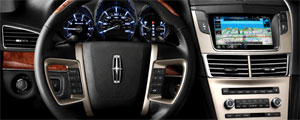 Our MKT’s Energy Impact Score is a pretty high at 19 barrels of oil consumed per year, with a Carbon Footprint that measures 10.2 annual tons of C02. The EcoBoost really showed its stuff at the track: 0 to 60 in only 6.1 seconds—that’s three seconds faster than a Buick Enclave—and the quarter mile in 14.7 seconds at 97 miles per hour.
Our MKT’s Energy Impact Score is a pretty high at 19 barrels of oil consumed per year, with a Carbon Footprint that measures 10.2 annual tons of C02. The EcoBoost really showed its stuff at the track: 0 to 60 in only 6.1 seconds—that’s three seconds faster than a Buick Enclave—and the quarter mile in 14.7 seconds at 97 miles per hour.
We were further blown away by the MKT’s ability to handle its two-and-a-half-ton weight in corners. Armed with electronic stability, traction, and roll control, it doesn’t feel nearly so massive in the midst of a slalom exercise. Yes, there is still some body roll, but it’s less than most vehicles this size. Stopping power comes from four-wheel disc brakes with ABS and Brake Assist. Halts averaged a reasonable 130 feet from 60 to 0. On everyday roads, the MKT provides the comfort and quiet necessary for carting the family around town or away on long road trips.
MKT prices range from $44,995 in front-wheel drive, to $49,995 for all-wheel drive EcoBoost. The 2010 Lincoln MKT is indeed another step in the right direction in restoring the luster of this fabled American luxury brand. The MKT may be Lincoln’s first full-size crossover, but it delivers like a veteran.
Specifications
- Engine: 3.5-Liter Ecoboost Twin-turbo Direct-injected V6
- Horsepower: 355
- Torque: 350 Lb Feet
- 0-60 MPH: 6.1 Seconds
- 1/4 Mile: 14.7 Seconds @ 97 MPH
- 60-0 MPH: 130 Feet
- EPA: 16 MPG City/ 22 MPG Highway
- Mixed Loop: 18.7 MPG
- Energy Impact: 19.0 Barrels Oil/Yr
- CO2 Emissions: 10.2 Tons/Yr
2024 Honda Ridgeline TrailSport
It Does Truck-Like Things Better Than Ever
Honda brought something truly unique to the pickup truck scene when their mid-size Ridgeline debuted for 2006. In 2017, it moved towards becoming a little more true truck-like, both in form and capability, now with yet another step in that direction for 2024. So, let’s see if the Ridgeline is really hitting its stride.
For 2024, it’s all about making this Honda Ridgeline better than ever. There are styling tweaks outside, along with tech and functional improvements inside, but the biggest news is the Ridgeline has now joined Honda’s TrailSport family of off-road inspired vehicles. This more-true-trucklike, second-gen Ridgeline been around since 2017, receiving periodic updates over the years; but joining the TrailSport family is the biggest leap yet.
Primarily, the TrailSport transformation includes General Grabber all-terrain tires, mounted on new Pewter Gray 18-inch wheels, steel underbody protection, and retuning the strut front, and multi-link rear suspension for added wheel articulation. And while we always appreciate the additional traction of off-road tires, the Ridgeline’s standard i-VTM4 all-wheel drive, with Intelligent Traction Management and snow, sand, and mud settings, was already quite capable of handling all but the most extreme off-roading, ground clearance of just 7.6 inches being it’s only real hinderance.
A 3.5-liter V6 remains under the hood as it has since the Ridgeline debuted for 2006; the current version outputs 280 horsepower and 262 lb-ft of torque, plenty enough muscle to handle its 5,000-lbs. towing capacity. A nine-speed automatic transmission with paddle shifters and bevy of push and pull buttons on the console replaced the six-speed automatic back in 2020.
In addition to adding TrailSport capability, a big focus for this update was making it more user-friendly inside, starting with the central touchscreen growing from 8 to 9 inches. It also gets faster processing speeds, menus have been simplified, and the native navigation system is improved with better graphics. It’s accompanied by a new digital instrument cluster, along with an upgraded center console with more storage space. Unique TrailSport touches include heavy duty floormats, leather-trimmed seats, orange stitching throughout the cabin, and orange ambient lighting.
The Ridgeline continues to offer things available nowhere else in the pickup truck market.
Exterior styling doesn’t exactly shout “macho big rig coming your way,” but the more vertical face and larger grille that arrived for 2021, along with this year’s added TrailSport elements, do continue to toughen up the Ridgeline’s image. The 5’4” bed remains highly functional with no large wheel well intrusions, multiple tie-downs points, lighting and even speakers. And of course, the Ridgeline continues to offer things available nowhere else in the pickup truck market, like the dual-action tailgate, and large, lockable, drainable, underbed storage. Not to mention being able to drive around in true car-like comfort, something we took full advantage of on our way to our Mason Dixon Dragway test track.
There was great grip off the line, with full power arriving smoothly but quickly, helping us to get to 60 in 7.0 seconds flat, a tenth quicker than the last Ridgeline we tested. That power delivery stayed fairly consistent the whole way down the track, barely interrupted by the nine-speed automatic’s smooth shifting. Our best quarter-mile run was 15.5 seconds at 90 mph.
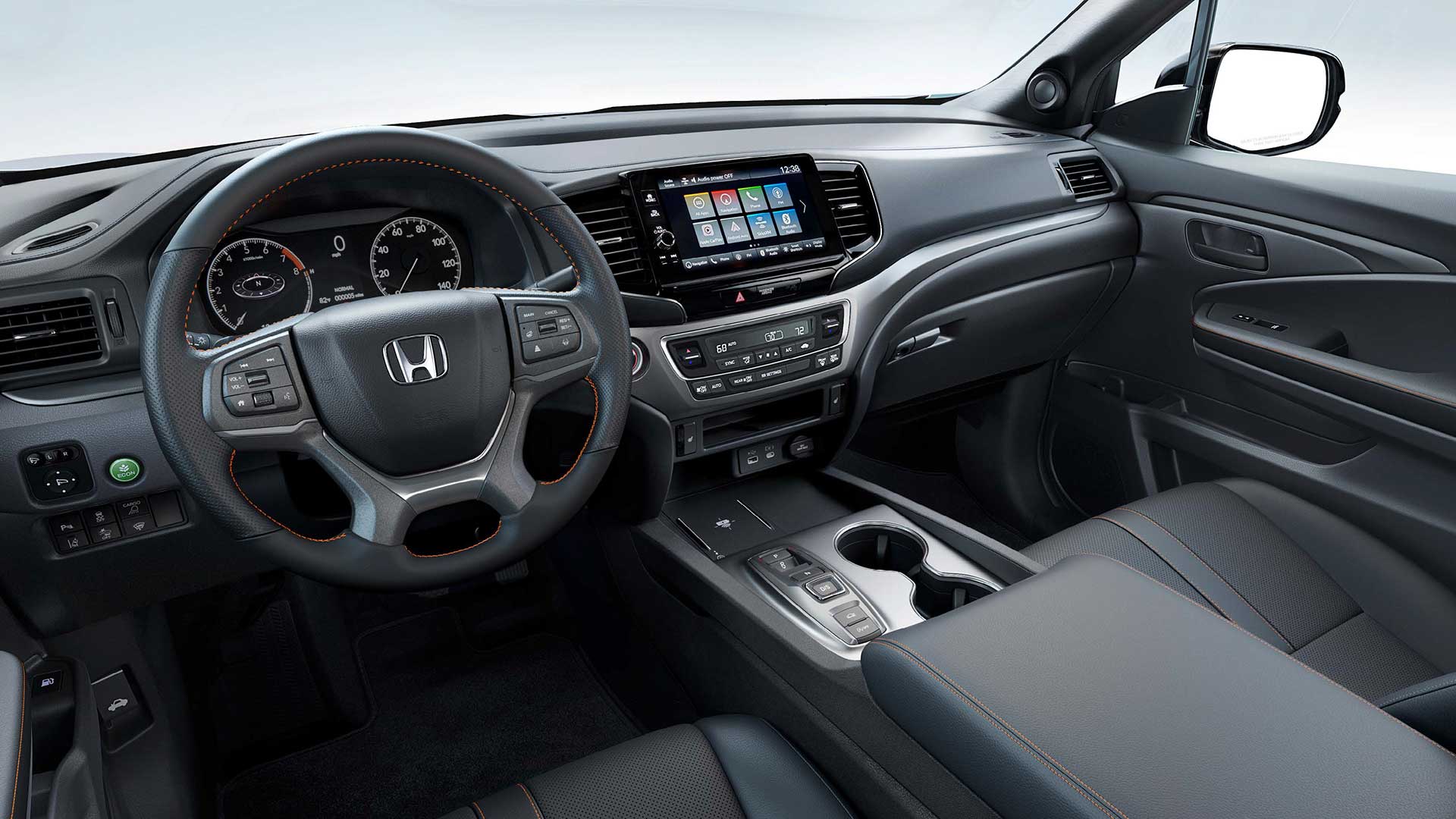
The revised suspension and knobbier tires didn’t really seem to add or detract from handling prowess, as it felt as solid, nimble, and car-like as it always has through our cone course. Perhaps a little less stiff than before, but good feedback, tight steering, and minimal body roll for a pickup, made for a very confidence inspiring experience. In our braking test, we stopped in a respectable average of 123 feet from 60, with only moderate amounts of nosedive and good feel through the pedal.
There is, however, a slight reduction in Government Fuel Economy Ratings with the all-terrain tires; 18-City, 23-Highway, and 20-Combined, our average, right on, at 20.4 mpg of Regular. That’s a slightly below average Energy Impact Score of 14.9 barrels of yearly oil use, with CO2 emissions of 7.4 tons.
TrailSport pricing falls in line just under the Ridgeline’s top Black Edition trim with a starting price of $46,375, about five grand over a base Ridgeline Sport.
So, whether you consider the Honda Ridgeline to be a “real” truck or not, this ruggedly smooth 2024 TrailSport does truck-like things better than ever. And we’re not just talking about the slight upgrade in off-road performance, we’re talking about a flexible bed to help you get chores done, and the ability to tow or haul with comfort and flexibility other trucks can only wish for. It’s why the Ridgeline brings more first-time buyers to Honda than any other vehicle, and why it continues to be a great choice in the growing midsize truck realm.
Specifications
- Engine: 3.5-liter V6
- Transmission: 9-speed automatic
- Horsepower: 280
- Torque: 262 lb-ft
- EPA: 18 City | 23 Highway | 20 Combined
- 0-60 mph: 7.0 seconds
- 1/4 Mile: 15.5 seconds at 90 mph
- 60-0 Braking (avg): 123 feet
- MW Fuel Economy: 20.4 mpg (Regular)
- Max Towing Capacity: 5,000-lbs








